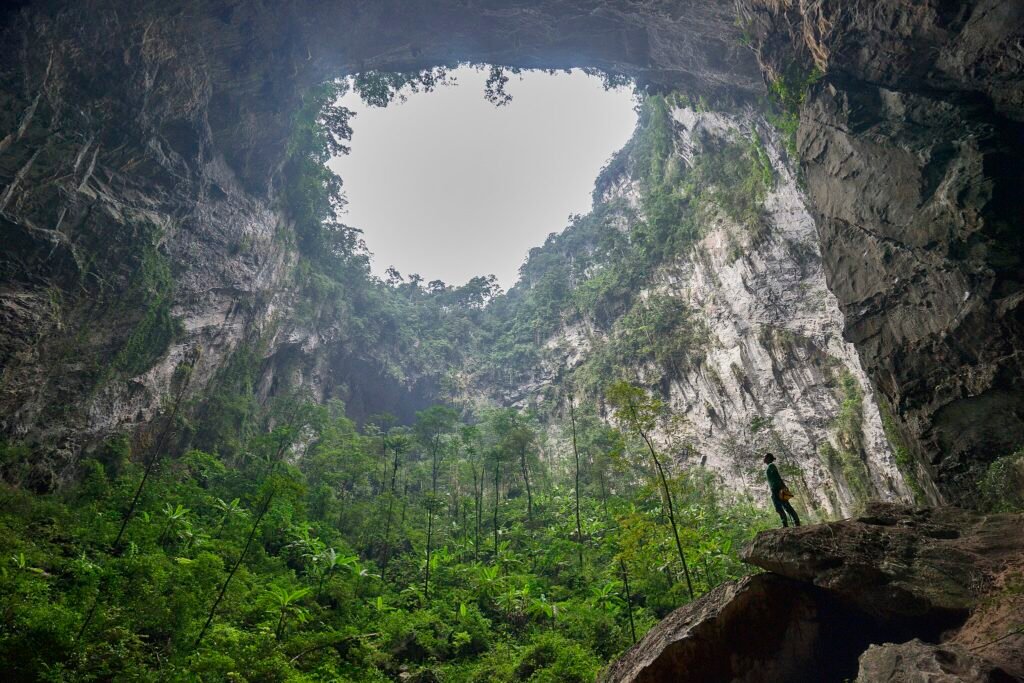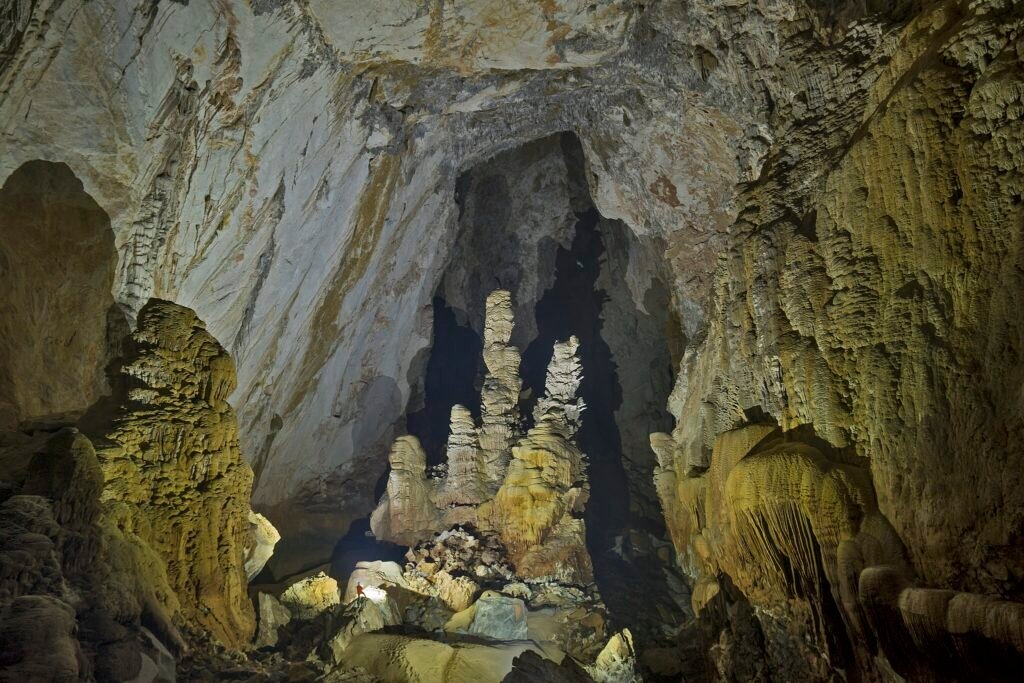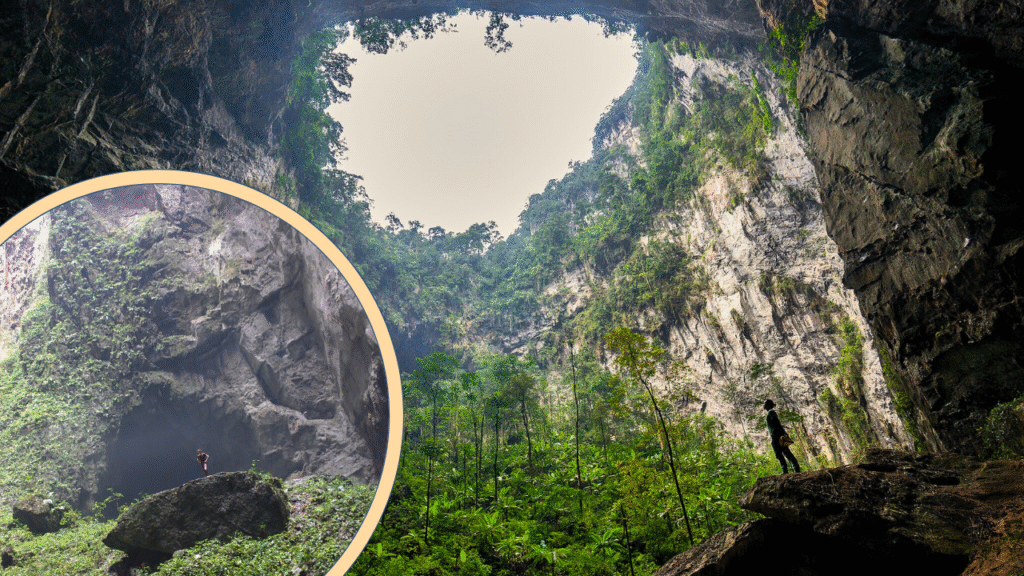Hang Son Doong in Vietnam is the world’s largest cave. In fact it is so massive, it even has its own weather. While the cave itself is no mystery, perhaps the best ever drone footage of the cave was shot six years ago by adventurist Ryan Deboodt and the result was amazing.
Hang Sơn Đoòng lies in the jungle-cloaked heart of Phong Nha–Kẻ Bàng National Park, Quảng Bình Province, near Vietnam’s border with Laos. Part of a UNESCO-recognized karst landscape hundreds of millions of years in the making, the cave sits amid a maze of sinkholes, underground rivers and limestone towers that make this area one of Asia’s most spectacular cave systems.
Discovery: From a Local’s Secret to a Global Sensation

The cave’s modern story begins with Hồ Khanh, a local logger who stumbled upon a gaping entrance in 1991 but could not relocate it for years in the dense forest. In 2009 he finally led cavers from the British Cave Research Association—led by Howard and Deb Limbert—back to the opening. Their survey work that year confirmed Sơn Đoòng as the largest known natural cave passage on Earth by volume, a finding that reshaped cave records worldwide.
Record-Breaking Scale: Numbers That Bend the Imagination
Measurements place Sơn Đoòng’s main passage at roughly 9 kilometers (5+ miles) long, with sections soaring around 200 meters high and 150–175 meters wide. Its surveyed volume—about 38.5 million cubic meters—makes it the largest known cave passage by volume; you could fit nearly 15 Great Pyramids of Giza inside. In 2019, divers found an underwater tunnel linking Sơn Đoòng with nearby Hang Thung, increasing the system’s potential volume even further.
How a Giant Is Made: Geology and Deep Time

Sơn Đoòng formed within Paleozoic (Permo-Carboniferous) limestone shaped by subterranean rivers and the collapse of cave ceilings over vast timescales. The broader Phong Nha–Kẻ Bàng karst began developing roughly 400 million years ago—among the oldest large karst systems in Asia—its labyrinth of voids carved by water dissolving limestone and then enlarged by collapse. This geologic engine explains Sơn Đoòng’s colossal cross-section and its dramatic skylights.
Skylights, Forests and “Weather” Underground
Two immense dolines—roof collapses—punch daylight into the darkness, creating micro-worlds where jungle trees reach for shafts of sun and clouds can condense and drift through the passage. Standing on the cave floor beneath a doline, you can see ancient green canopies thriving beside sandbanks and an underground river that courses along the main corridor. These rare conditions make Sơn Đoòng a natural laboratory for studying cave ecosystems and climate interactions.
Landmarks Within: The Great Wall and Towering Formations

Explorers encountered a 90-meter “Great Wall of Vietnam,” a massive calcite barrier that long prevented full passage, along with outsized formations including stalagmites approaching ~80 meters (≈260 feet) tall and unusually large cave pearls. Such mega-scale speleothems testify to uninterrupted mineral-rich water flow and stable conditions over extraordinary spans of time.
Visiting the Cave: Strict Limits to Protect a Fragile Wonder
Sơn Đoòng is not a casual walk-in. Access is tightly controlled and only possible on guided expeditions with specialist outfitters; the first limited adventure tours began in 2013–2014 and remain capped to protect the site. Group sizes are small, seasons are restricted, and visitors must meet fitness and safety requirements—rules that help preserve the cave’s pristine chambers and delicate biota while supporting conservation in local communities.
Why Sơn Đoòng Matters
Beyond the headlines, Sơn Đoòng anchors global understanding of karst evolution, underground rivers and large-void cave mechanics. Its protection sits within a broader UNESCO property spanning Vietnam and Laos that hosts rare species and more than 220 kilometers of documented caves. Carefully managed tourism and continued scientific study ensure this giant remains both a source of knowledge and a sustainable lifeline for nearby villages.
Key facts at a glance: Discovered by Hồ Khanh (1991); mapped and confirmed as the world’s largest cave passage (2009); estimated volume ~38.5 million m³; main passage ~9 km long, up to ~200 m high and ~150–175 m wide; limited tourism began 2013–2014 under strict conservation controls

Hi, I’m Andrew, and I come from India. Experienced content specialist with a passion for writing. My forte includes health and wellness, Travel, Animals, and Nature. A nature nomad, I am obsessed with mountains and love high-altitude trekking. I have been on several Himalayan treks in India including the Everest Base Camp in Nepal, a profound experience.



